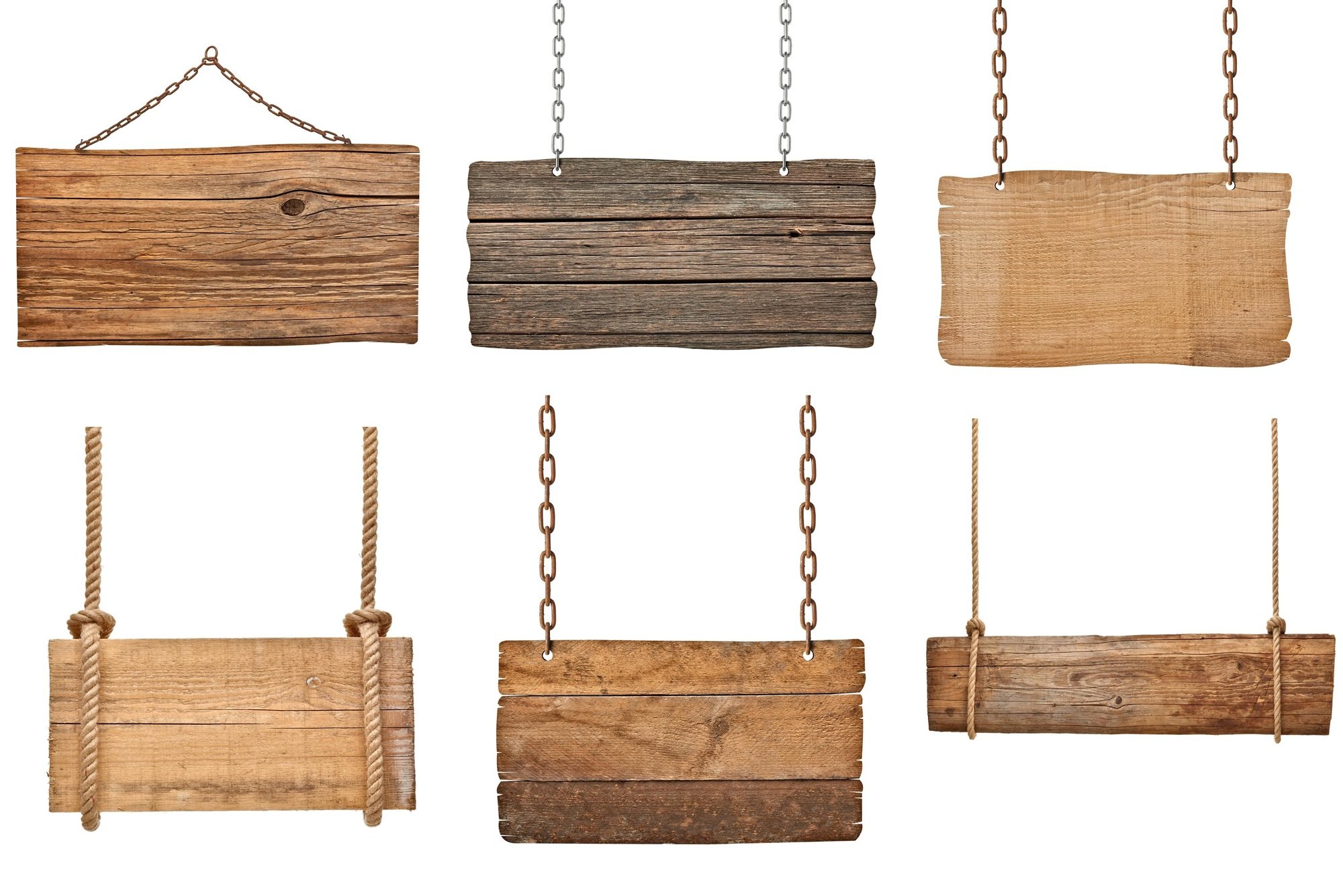Key Takeaways

- Importance of Visibility: A DIY business sign enhances brand visibility and serves as a crucial marketing tool, creating strong first impressions on potential customers.
- Personalization Enhances Connection: Customizing your sign allows you to reflect your brand’s identity, fostering deeper connections with customers by showcasing creativity and personal flair.
- Material Choices Matter: Different materials, like wood, metal, and acrylic, offer varying durability and aesthetics, influencing the overall effectiveness and appeal of your sign.
- Essential Tools and Techniques: Having the right tools and materials is vital for crafting a high-quality sign; proper planning and attention to detail during construction enhance the final product.
- Design and Placement Tips: Use contrasting colors and clear typography for readability, and position your sign in high-traffic areas to maximize visibility and attract customer interest.
- Emphasize Branding: Ensure your sign conveys your business message clearly and aligns well with your branding for a cohesive customer experience.
Starting a business is an exciting journey, and one of the first steps to establishing your presence is creating a standout sign. A DIY business sign not only showcases your brand but also reflects your creativity and personal touch. Whether you’re a seasoned entrepreneur or just starting out, crafting your own sign can be a rewarding experience that sets you apart from the competition.
Importance of a DIY Business Sign

A DIY business sign plays a crucial role in promoting your small business. It serves as a visual representation of your brand identity, making a memorable first impression on potential customers. A well-crafted sign showcases your creativity, helping you stand out in a crowded marketplace.
A DIY approach allows for personalization. You can incorporate unique elements that reflect your brand’s values and style. Customers often connect more deeply with businesses that display individual flair, making them more likely to choose your products or services.
In addition to enhancing your brand visibility, a DIY business sign contributes to effective marketing. Signs placed strategically can attract foot traffic, increasing customer awareness and engagement. Simple, eye-catching designs can convey essential information quickly, allowing potential customers to understand your offerings at a glance.
Creating your own sign fosters a sense of ownership and pride in your small business. It not only reflects your vision but also creates a memorable touchpoint for your audience, ultimately strengthening customer loyalty.
Types of DIY Business Signs

Creating a DIY business sign involves selecting the right materials to reflect your brand’s identity and enhance your marketing efforts. Here are some popular types of signs you can consider for your small business.
Wood Signs
- Customization: You can laser cut wood signs to fit your specific needs, allowing for various styles that represent your brand effectively. Utilizing different types of wood, including reclaimed options, showcases your unique aesthetic.
- Design: Hand-painted or engraved wood designs offer flexibility for various themes, from rustic to traditional. These options give your sign a tailored look that resonates with your target audience.
- Durability: While wood signs tend to be durable, applying regular maintenance helps preserve their appearance over time.
Metal Signs
- Strength: Metal signs provide exceptional durability, making them suitable for indoor and outdoor use. Their sturdy composition withstands weather conditions, ensuring longevity for your business.
- Versatility: Metal signs can be printed with vibrant colors or etched for a sleek, minimalistic look. You can incorporate branding elements that align with your marketing strategy.
- Visibility: The reflective surface of metal signs enhances visibility from a distance, drawing attention to your business location.
Acrylic Signs
- Modern Appeal: Acrylic signs offer a contemporary aesthetic that works well for many business environments. Their sleek, clean look can elevate your branding and marketing efforts.
- Lightweight: Acrylic is lighter than glass, making it easy to install or reposition as necessary. This feature adds convenience to your sign setup.
- Color Options: You can create acrylic signs in a wide range of colors and finishes, allowing you to align your sign’s look with overall branding elements seamlessly.
Materials Needed for Creating a DIY Business Sign

Creating a DIY business sign requires specific materials tailored to your chosen design. Focus on the type of sign you want to create, whether it be wood, metal, or acrylic.
Tools and Supplies
Wood Signs
- Scrap wood, plywood, or medium-density fiberboard (MDF) for the base.
- Latex or acrylic paint for vibrant colors.
- Paintbrushes for applying paint.
- Wood stain, like Minwax, for a polished finish.
- Stencils or vinyl letters for precise lettering.
- Wood glue for assembly.
- Sandpaper for smoothing edges.
- Cutting tools, such as a miter saw, for shaping.
- Mounting hardware, including hooks, screws, or nails, to secure the sign.
Metal Signs
- Metal sheets made of aluminum or steel for lasting durability.
- Metal-cutting tools such as a jigsaw with a metal-cutting blade or a plasma cutter.
- Shaping tools including a metal bender, hammer, and dolly set.
- Safety gear, like earplugs, safety glasses, and gloves for protection.
- Metal drill bits for creating holes.
- A deburring tool to remove sharp edges.
- A file for smoothing surfaces.
- Metal coatings or paints for added color and protection.
Plastic and Acrylic Signs
- Acrylic sheets as a lightweight option.
- Heat transfer vinyl (HTV) for adding designs.
- A CNC router for precise etching, if desired.
Design Software Options
Choosing the right design software can elevate your DIY sign project. Various tools assist in creating tailored graphics and layouts:
https://www.youtube.com/watch?v=b6WlGfVokUI
- Graphic design software, such as Adobe Illustrator or Canva, allows for professional-grade designs.
- Free online tools like GIMP or Inkscape offer user-friendly interfaces for beginners.
- Specialized sign-making software can simplify the process for custom lettering and formats.
Investing the time in the right materials and tools enhances your sign’s visibility, contributing to effective marketing for your small business.
Step-by-Step Guide to Making a DIY Business Sign

Creating a DIY business sign requires a clear plan and attention to detail. Follow these steps to design and construct a sign that effectively markets your small business.
Planning Your Design
Define your sign’s purpose, focusing on attracting customers or providing essential information. Consider your audience and determine the message you want to convey. Select materials that reflect your brand’s identity. Options include wood pallets, chalkboards, fabric, cardboard, or recycled materials. Choose a color scheme that ensures readability, utilizing bold, contrasting colors for visibility or softer hues for a subtle aesthetic. Experiment with easy-to-read fonts that align with your branding style.
Constructing the Sign
Gather necessary tools and materials according to your design choice. For wood signs, use scrap wood, stencils, paint, and cutting tools. For metal signs, prepare metal sheets, cutting tools, and safety gear. When constructing, focus on precision and craftsmanship to enhance your sign’s appeal. Ensure that measurements are accurate, and assemble components securely to withstand outdoor elements if needed.
Finishing Touches
Apply any additional elements like protective coatings or embellishments to enhance durability and aesthetics. Consider adding unique features that express your brand’s personality. Use clear finishes to ensure longevity and maintain visual appeal. Once complete, position your sign strategically to maximize visibility, helping to draw attention to your small business and improve marketing efforts effectively.
Tips for Effective DIY Business Signs

Creating an effective DIY business sign involves attention to detail in design elements and strategic placement to enhance its impact on your small business’s marketing efforts.
Color and Typography Choices
- Select colors that reflect your brand identity and resonate with your target audience. Ensure high contrast between background and text colors to enhance readability. For instance, using white text on a dark blue background increases legibility from a distance.
- Choose typography that aligns with your message. Opt for legible fonts, preferably sans-serif, as they provide clarity and readability. Avoid decorative fonts that may hinder quick comprehension.
Placement and Visibility
- Position your sign where it attracts maximum attention. Signs placed at eye level in high-traffic areas effectively draw customers in and boost your small business’s visibility.
- Ensure that your sign isn’t obstructed by other objects and remains free from distractions. A well-placed sign enhances the effectiveness of your marketing by delivering your message directly to potential customers.
Conclusion

Creating a DIY business sign is a rewarding way to express your brand’s identity while standing out in a competitive market. By investing time and effort into crafting a unique sign, you not only enhance your business’s visibility but also build a personal connection with your customers.
Remember to choose materials and designs that resonate with your audience and reflect your brand’s values. With the right tools and a bit of creativity, your sign can become a powerful marketing tool that draws in foot traffic and fosters customer loyalty. Embrace the process and let your creativity shine through your DIY sign, making it a true representation of your business.
Frequently Asked Questions

Why is a DIY business sign important?
A DIY business sign is crucial because it represents your brand and showcases your creativity. It helps differentiate your business from competitors and makes a memorable first impression on potential customers.
What are the benefits of creating my own business sign?
Creating your own sign fosters a sense of ownership and pride, enhancing customer loyalty. Additionally, it allows for personalization that connects with customers, boosts visibility, and strengthens your brand identity.
What materials can I use for DIY business signs?
You can use various materials like wood, metal, or acrylic for DIY signs. Each material offers unique benefits: wood for customization, metal for durability, and acrylic for a modern look.
What tools do I need to make a DIY business sign?
Essential tools vary by material but generally include cutting tools, safety gear, and design software like Adobe Illustrator or Canva to create graphics and layouts.
How do I plan the design of my business sign?
Begin by defining the sign’s purpose and considering your target audience. Choose materials that reflect your brand identity and ensure your design is clear and visually appealing to attract attention.
What are some tips for effective sign design?
For effective sign design, select colors that align with your brand and ensure high contrast for readability. Use legible typography, position the sign at eye level, and keep it unobstructed in high-traffic areas for maximum visibility.
How do I ensure my sign is visible and attracts customers?
Position your sign in high-traffic areas at eye level and make sure it’s free from distractions. Use bold colors and clear text to attract attention and convey your message quickly.
Image Via Envato



